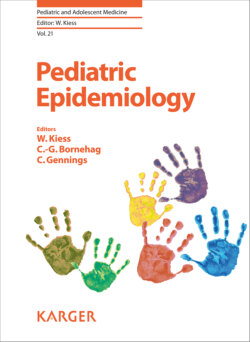Читать книгу Pediatric Epidemiology - Группа авторов - Страница 21
На сайте Литреса книга снята с продажи.
Definitions and Definition Problems
ОглавлениеDefinitions of child maltreatment have been difficult to operationalize universally and there are differing standards in terms of legal, research and clinical perspectives. Legal definitions are based on cultural and relative social norms, which reduce consistency across cultures and geographical areas. Definitions of maltreatment from an epidemiological perspective are generally broader than legal definitions but also represent objective attempts to operationalize acts of maltreatment [6].
The scope of child maltreatment is generally defined to encompass physical and sexual abuse, emotional maltreatment, and exposure to intimate partner violence and neglect of a person under 18 years of age by an adult on whom the child is dependent. The WHO definition is as follows [5]:
Child maltreatment includes all types of physical and/or emotional ill treatment, sexual abuse, neglect, negligence and commercial or other exploitation that result in actual or potential harm to the child’s health, survival, development or dignity in the context of a relationship of responsibility, trust or power.
The very similar but shorter Swedish definition according to the “Swedish committee on child abuse and related issues” from 2002 is as follows:
Child maltreatment is when an adult person exposes a child to physical or psychological violence, sexual assault or humiliation, or neglects the basic needs of the child.
Although it is short, this definition covers the problem area. It specifically does not discuss whether the maltreatment was intended or not, as this would lead to a number of other problems. For instance, how intent is actually delineated and whether acts that are part of a planned punishment or sudden unplanned outbursts of rage with severe consequences can be seen as maltreatment, are debatable questions. The above definition also does not take into consideration whether there is societal/cultural acceptance of corporal punishment of children. Although some understanding of cultural customs is necessary in practical work with children, this should not enter into definitions regarding research on incidence and prevalence. However, both of the above-mentioned issues will have great impact on comparisons between countries, particularly when research is built upon agency and police reports. Also, in surveys on parental attitudes and behaviour, we will often run into some of the following problems:
•Is there a line of demarcation between harsh parenting and corporal punishment? At what point a child is identified as maltreated is fundamental to understanding the limitations of data estimating the epidemiology of child maltreatment.
•Do some researchers only publish more severe types of maltreatment, but not what they may consider mild forms of corrections, like a slap on the head or even spanking of the buttocks?
•Will parents all over the world give the same answers to specific questions, or will they look upon some questions as inappropriate or even provoking towards their parenthood? Will they not consider childhood to include all those up to 18 years of age, for example, if they would allow their daughter marry at the age of 15 or younger?
•If a parent punishes his/her child as a means of preventing the child from hurting himself/herself or others – is that considered maltreatment or not? In many countries, it would not be reported, while it may certainly be reported in northern Europe, particularly in the Nordic countries.
Other definitional problems are how one defines psychological abuse, sexual assault, neglect (passive and active), humiliation, witnessing violence, solitary or repeated violence and multiple violence. The best, but not perfect way, to overcome these problems is to let children themselves answer very specific questions about maltreatment behaviour separated from questions about attitudes (see more below).
